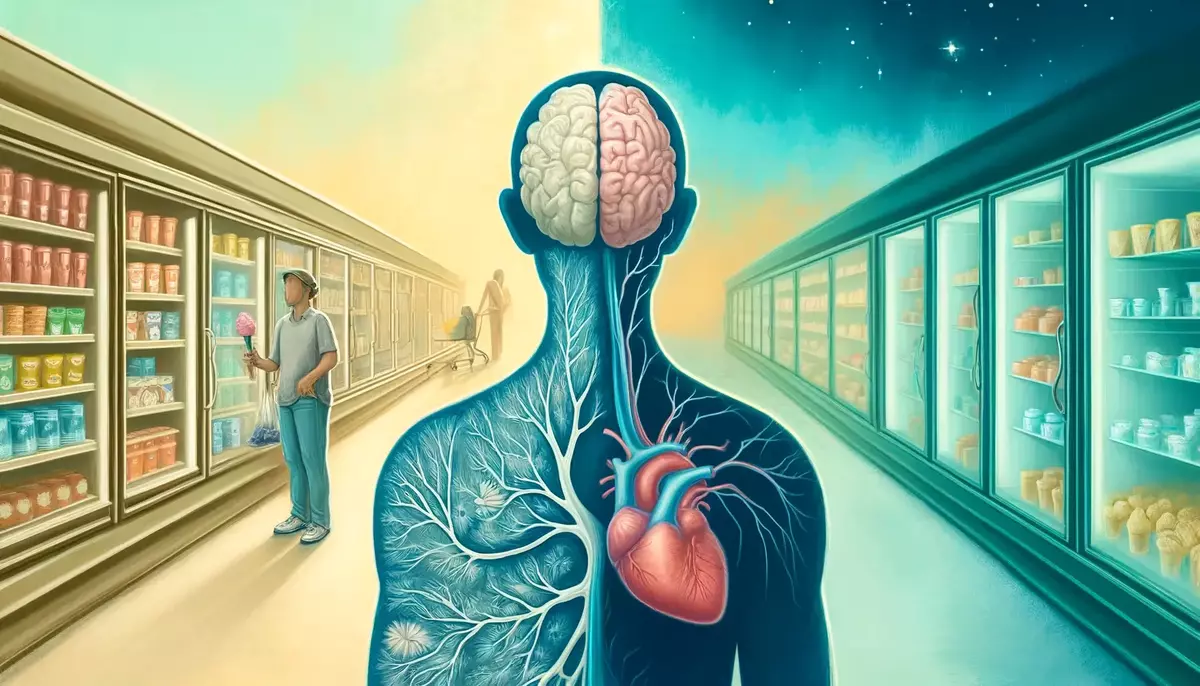Follow the
Made Simple Blog
Concise and actionable advice from senior EMDR thought leaders, delivered to your inbox monthly
Made Simple: EMDR and Polyvagal Theory
Because memories are not just thought, but felt.

In one sentence: Trauma leads to a dance of distress between your nervous system and your memory networks—understanding it helps uncover opportunities for intervention.
In one paragraph: EMDR’s AIP model teaches us about self-adaptive memory networks. Polyvagal Theory offers a biological basis for understanding how trauma, through our nervous system, can impact body and brain function. Combining these two models helps us recognize the ways in which the nervous system interacts with memory networks to process and integrate information, and where opportunities for therapeutic intervention lie. This leads to profound synergies that can greatly enhance the efficacy of the EMDR therapy model.

The Ice Cream Aisle Epiphany
Flashback to a grocery store in Colorado in 2020. Denver was emerging from the pandemic lockdown, and my local community had just experienced another mass shooting that took place in a grocery store. I was standing in the ice cream aisle, struggling with the privileged problem of deciding which ice cream to buy, when suddenly there was a loud, startling noise. “Pop!”
“What was that, Was that a gun? Am I in danger? What’s happening?” My mind raced. My ears perked up. I froze.
I looked up and down the aisle, scanning the environment for information. My heartbeat raced, my blood pressure increased, and my muscles contracted as I tried to figure out what that noise was.
A group of teenagers walked by, one of them playfully hitting another. “You jerk! I can’t believe you popped that in my ear. I’m going to get you back!”
A deep breath. “It’s just kids playing and being silly. I’m safe,” I thought. I tried to get back to picking out ice cream. But I couldn’t.
Memories from my past were flashing through my mind. I recalled a personal incident with gun violence. My mind replayed snippets of scenes from that night a few years ago. I remembered running with the gun I had wrestled away from someone who was about to use it to kill himself or someone else. I could feel the familiar fizzy feeling of adrenaline as I stood in the brightly-lit freezer aisle. My mind played images from the news of the local shooting in the grocery store. The survivors, the vigil for those murdered, the gunman. That sound had started a cascade of memories, which I was viscerally reexperiencing in that moment.
I recognized the experience I was having and looked for ways to maneuver back to a more regulated state. “Breathe. Ground. Just notice,” my inner therapist voice coached. I looked around for cues that told me I was safe, a skill I learned from Polyvagal Theory. I put that memory of gun violence from my past into a container, a skill I learned from EMDR. I took a few deep breaths and added some slow bilateral stimulation by swaying side to side, an EMDR intervention. I’m sure I looked like an interesting character, standing in that aisle administering some therapy techniques on myself. Regardless, I got regulated again in just a few minutes and went on with my shopping.
AIP meets Polyvagal Theory
That’s an awfully dramatic ice cream story, Rebecca. What does it have to do with anything?
I share this story because it’s the moment that I understood with clarity the synergy between the Adaptive Information Processing (AIP) model of EMDR and Polyvagal Theory.
Polyvagal Theory (developed by Dr. Stephen Porges in 1994) offers a biological basis for understanding how trauma can impact body and brain function, emphasizing the importance of safety and social connections in healing. It introduces the concept of neuroception—the body’s internal surveillance system, which unconsciously scans the environment for cues of danger and safety, responding to danger by activating the alarm bells of the autonomic nervous system (a.k.a the ‘involuntary nervous system’). When I heard the popping sound, my defenses activated based on an environmental cue along with the information held in my unique memories. My nervous system worked its adaptive magic, preparing me with a survival response. A flood of sympathetic arousal quickly prepared me to mobilize. This physiological response is the focus of Polyvagal theory.
Feeling the increase in sympathetic energy along with the stimulus of a potential gun triggered my memory networks, which is the focus of EMDR. Based on the present trigger, AIP began activating memories, reminding me of my own past trauma and my community’s recent trauma. Not only was I thinking about those memories, but my body was reexperiencing parts of those memories through autonomic feelings and sensations. The sound hadn’t only startled my autonomic nervous system; it also activated my memory networks.
The principles of both models were materializing simultaneously and interdependently at that moment, as I stood frozen in the ice cream aisle. It was a dance of distress between my nervous system and my memory networks.
It was a moment that taught me that you don’t just think about your memories, you feel your memories. And that process happens because of the relationship between memory storage and autonomic processes.
Clients come to therapy because of dysregulated nervous systems, regardless of their diagnosis or symptoms.
Polyvagal-Informed EMDR
The integration of Polyvagal Theory and AIP is the focus of what I call Polyvagal-Informed EMDR (PV-EMDR).
Recognizing the interdependence of the autonomic nervous system and memory storage, PV-EMDR enhances the eight phases of EMDR by integrating correlates of the autonomic nervous system.
Fundamental principles of PV-EMDR include:
- The nervous system is the mechanism of assessment, intervention, and outcome of psychotherapy
- Polyvagal Theory describes the functioning of the autonomic nervous system and the role of the vagus nerve as it mediates autonomic processes
- The AIP model of EMDR describes the storage of memories
- Memories are not just thought but felt, through autonomic processes
- The autonomic nervous system influences the storage of memory
- The autonomic and central nervous systems have a bidirectional, interdependent relationship. The state of one system directly influences the state of the other.
- Resiliency is a means to an end and an end itself
My 2023 book on PV-EMDR unpacks the above principles and provides you with a set of PV-informed EMDR tools, such as a Preparation Hierarchy Model to evaluate clients’ readiness for reprocessing and to plan interventions to help clients get ready for this crucial EMDR phase. It also emphasizes the importance of the therapeutic relationship within the EMDR model, something that has historically been lacking and poorly described, and how to be attuned without getting in the way of reprocessing.
Implications for the EMDR therapist
I have found the integration of Polyvagal Theory within EMDR to be a way to supercharge the model. It makes you a better EMDR practitioner, a more attuned therapist, and it decreases the confusion of determining whether or not your client is ready for the reprocessing phase.
Clients come to therapy because of dysregulated nervous systems, regardless of their diagnosis or symptoms. Recognizing the ways the nervous system processes and integrates information can tell you where the opportunities for intervention lie and greatly enhance the efficacy of the EMDR therapy model.
Join Rebecca's mailing list to hear more about PV-EMDR, receive free resources, and learn about new trainings— sign up today!
More Articles
Follow the Made Simple Blog
By bilateralstimulation.io
Concise and actionable advice from senior EMDR thought leaders,
delivered to your inbox monthly
© Copyright bilateralstimulation.io BLS GmbH 2025
